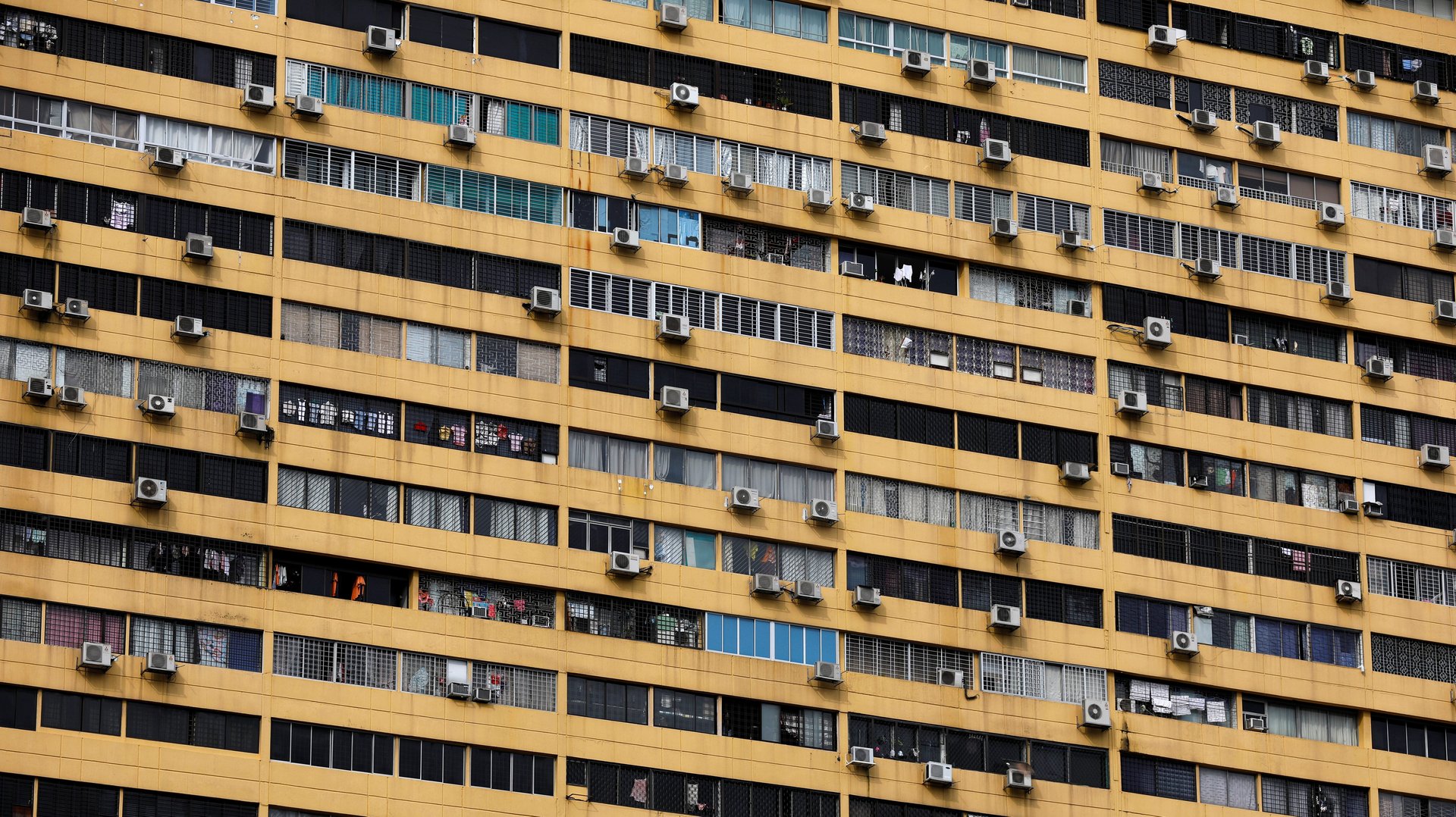India is the epicenter of rethinking air conditioning
Humans have seemingly perfected the science of staying cool. Air conditioning and refrigeration units are relatively cheap, the mechanics are pretty simple, and access to them is on the rise.


Humans have seemingly perfected the science of staying cool. Air conditioning and refrigeration units are relatively cheap, the mechanics are pretty simple, and access to them is on the rise.
The downside is that they’re horrible for a planet grappling with a growing climate crisis.
Globally, about 12% of non-carbon dioxide emissions can be attributed to refrigeration and air conditioners, according to the US Environmental Protection Agency. That number is expected to increase as the earth heats up and populations swell in already-warm climates such as India, which, by launching an air conditioning innovation competition, is on the front lines of the effort to re-envision the globe’s cooling technologies.
In Delhi, where temperatures during the summer regularly crest 40.5 degrees Celsius (105 degrees Fahrenheit), cooling currently comprises 40% to 60% of summer peak electricity generation. And that’s in a city where a minority of residents use air conditioning at all; about 5% of residents have cooling in their homes. As more Indians enter the middle class, they’ll likely spend disposable income on basic luxuries that include energy-intensive air conditioning units.
And who can blame them? Research shows that by 2100, in a best case scenario, close to half the Earth’s population will face 20 days of potentially-fatal heat and humidity each year. Some areas of northeast India, research has shown, will become so hot that being outside for more than a few hours could be deadly, according to The Verge.
With that in mind, the Indian government in November 2018, along with two global energy nonprofits, launched The Global Cooling Prize. It’s a competition worth $3 million to find new and sustainable technologies to cool the planet’s workspaces and homes. More than 440 applications for the prize were submitted from 56 countries, including from some of the world’s largest air conditioner manufacturers and rising startups.
It’s an effort to totally re-think how we cool the spaces in which we live and work. Currently we use compression technology, which circulates coolants through a compressor and condenser to remove heat and moisture from indoor air. Rethinking that approach means throwing out every aspect of the compression technology we use today to embrace newer, environmentally-friendly approaches, says Vitalij Pecharsky, a scientist at the Ames Laboratory, a US Department of Energy facility in Iowa.
“In my mind, at least, the future of refrigeration is really not in the traditional compression technologies as we know them,” Pecharsky says.
The globe is expected to add about 700 million new air conditioning units in the next decade, and close to 1.5 billion by 2050, according to research out of the US Department of Energy. But the technology used to cool public and private spaces hasn’t fundamentally changed much since it was invented more than 100 years ago. And that lack of innovation is now a bad thing for the planet.
Air conditioners and refrigeration systems pose a two-pronged challenge:
- It takes a lot of energy to power them. In the US, for example, about 90% of homes have at least one air conditioning unit, and they account for close to 6% of the nation’s total residential energy use. That alone contributes close to 100 million tons of carbon dioxide into the atmosphere every year. In India, the International Energy Agency estimates the peak electricity load from air conditioning could climb by 10% by 2050 if the technology doesn’t modernize.
- Common in all these machines are hydrofluorocarbons, a type of industrial chemical used for cooling. These chemicals aren’t harmful unless there is a leak in an air conditioning unit—but leaks are common. When HFCs are released into the atmosphere, they wind up trapping many times more heat in the atmosphere than carbon dioxide.
There are no shortage of ideas to make air conditioning greener and better. Some of these ideas make current units more efficient, some incorporate a combination of old and new technologies, and still others re-envision cooling entirely. One concept plays with the idea of ditching coolants and using rare earth materials and magnetic fields to generate heat and cold air. Another idea uses an electric field to change the polarization of a material—a rare earth metal—to warm and cool.
The problem with deploying any of these ideas? Our current units have had more than 100 years to become exceptionally cheap.
“The incumbent industry has cost-optimized the existing product to a point that it’s very, very, very hard for a new technology to get onto a cost curve that enables it to achieve sufficient scale,” says Iain Campbell, an air conditioning industry veteran and official with The Global Cooling Prize. “For new tech to be able to access the channels of distribution is almost impossible.”
For that reason, several startups have run into difficulties trying to compete with the cheaper, bad-for-the-planet status quo.
But the race to create a better way to cool ourselves has already begun. In November 2019, The Cooling Prize will announce 10 finalists, each getting $200,000 to develop prototypes to be tested. In keeping with India’s role with the prize, some of that testing will be in Delhi. For two months straight, contestants will keep their prototypes running in local apartments, judged on efficiency—and the ability to work under intense heat.